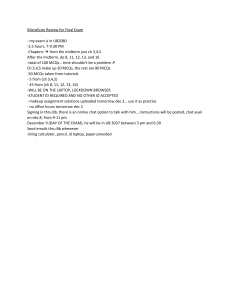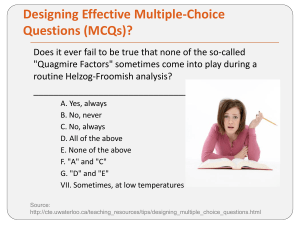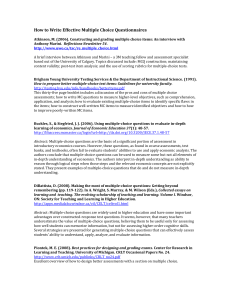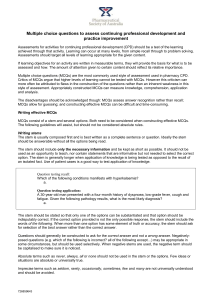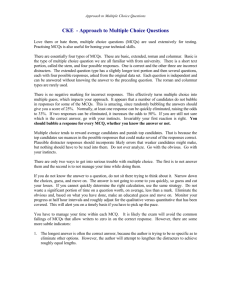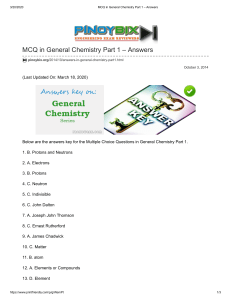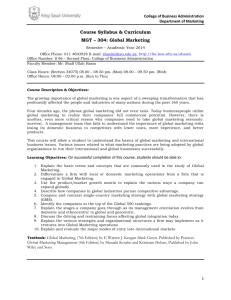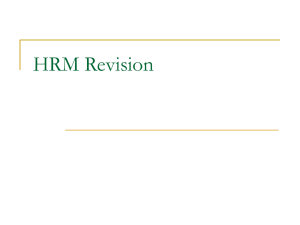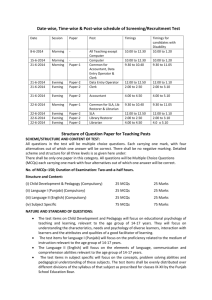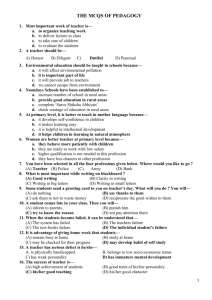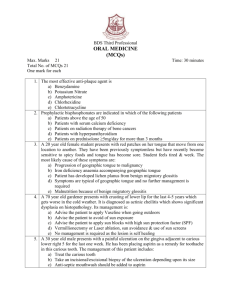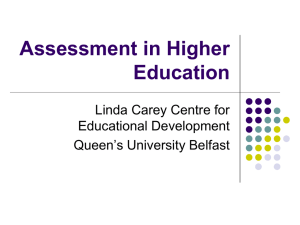MCQ Construction Guidelines: Improve Test Questions
advertisement
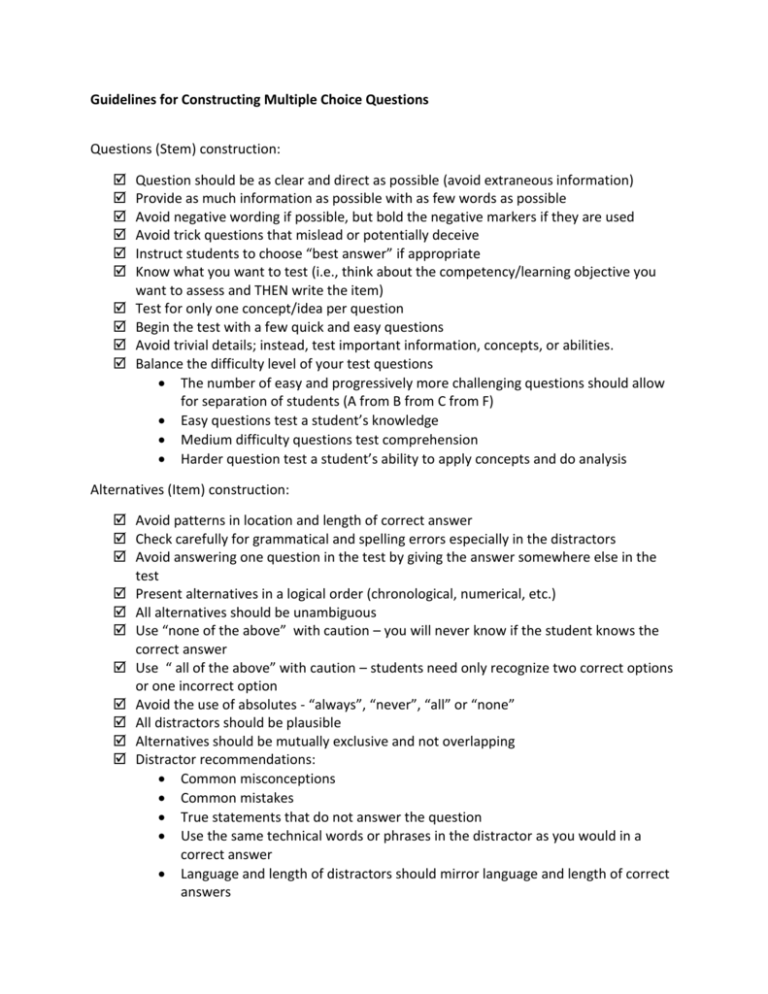
Guidelines for Constructing Multiple Choice Questions Questions (Stem) construction: Question should be as clear and direct as possible (avoid extraneous information) Provide as much information as possible with as few words as possible Avoid negative wording if possible, but bold the negative markers if they are used Avoid trick questions that mislead or potentially deceive Instruct students to choose “best answer” if appropriate Know what you want to test (i.e., think about the competency/learning objective you want to assess and THEN write the item) Test for only one concept/idea per question Begin the test with a few quick and easy questions Avoid trivial details; instead, test important information, concepts, or abilities. Balance the difficulty level of your test questions The number of easy and progressively more challenging questions should allow for separation of students (A from B from C from F) Easy questions test a student’s knowledge Medium difficulty questions test comprehension Harder question test a student’s ability to apply concepts and do analysis Alternatives (Item) construction: Avoid patterns in location and length of correct answer Check carefully for grammatical and spelling errors especially in the distractors Avoid answering one question in the test by giving the answer somewhere else in the test Present alternatives in a logical order (chronological, numerical, etc.) All alternatives should be unambiguous Use “none of the above” with caution – you will never know if the student knows the correct answer Use “ all of the above” with caution – students need only recognize two correct options or one incorrect option Avoid the use of absolutes - “always”, “never”, “all” or “none” All distractors should be plausible Alternatives should be mutually exclusive and not overlapping Distractor recommendations: Common misconceptions Common mistakes True statements that do not answer the question Use the same technical words or phrases in the distractor as you would in a correct answer Language and length of distractors should mirror language and length of correct answers References Atkinson, M. (2006). Constructing and grading multiple choice items: An interview with Anthony Marini. Reflections Newsletter 54. http://www.uwo.ca/tsc/re_multiple_choice.html A brief interview between Atkinson and Marini, a 3M teaching fellow and assessment specialist based out of the University of Calgary. Topics discussed include: MCQ construction; maintaining content validity; post‐test item analysis; and the use of scoring rubrics for multiple‐choice tests. Brigham Young University Testing Services & the Department of Instructional Science. (1991). How to prepare better multiple-choice test items: Guidelines for university faculty. http://testing.byu.edu/info/handbooks/betteritems.pdf This 35-page booklet includes a discussion of the pros and cons of multiple choice assessments; how to write MC questions to measure higher‐level objectives, such as comprehension, application, and analysis; how to evaluate existing multiple‐choice items to identify specific flaws in the items; how to construct well‐written MC items to measure identified objectives and how to improve poorly‐written MC items. DiBattista, D. (2008). Making the most of multiple-choice questions: Getting beyond remembering (pp. 119-122). In A. Wright, S. Murray, & M. Wilson (Eds.), Collected essays on learning and teaching. The evolving scholarship of teaching and learning. Volume I. Windsor, ON: Society for Teaching and Learning in Higher Education. http://apps.medialab.uwindsor.ca/ctl/CELT/celtvol1.html Multiple‐choice questions are widely used in higher education and have some important advantages over constructed‐response test questions. It seems, however, that many teachers underestimate the value of multiple‐choice questions, believing them to be useful only for assessing how well students can memorize information, but not for assessing higher‐order cognitive skills. Several strategies are presented for generating multiple‐choice questions that can effectively assess students’ ability to understand, apply, analyze, and evaluate information. Runte, R. (2001). How to construct better multiple choice tests. University of Lethbridge Faculty of Education. http://www.uleth.ca/edu/runte/tests/multiplechoicetests.html A multi‐part guide to constructing multiple‐choice tests, written by Dr. Robert Runte at the University of Lethbridge. The advantages & disadvantages of multiple-choice questions are outlined, and tips for all of the following are provided: writing good MCQs; the ordering/arrangement of questions; creating innovative MCQs; and using MCQs to test “higher level” thinking. Illustrative examples are provided throughout. See also the following PDF, composed by Dr. Runte, which contains a checklist to aid in the construction of MCQs, a sample Table of Specifications, and some guidelines for using post‐test item analysis to improve MCQ test design. http://cll.mcmaster.ca/resources/pdf/runte.pdf University of Leicester. The CASTLE Toolkit. Designing & managing MCQs. (2005). http://www.le.ac.uk/castle/resources/mcqman/mcqcont.html A thorough handbook pertaining to the construction of MCQs, originally prepared at the University of Cape Town, and reproduced as part of the University of Leicester’s CASTLE Toolkit. Highlights include: the provision and analysis of specific question examples from three disciplines (education, sociology, and economics); a discussion of scoring & statistics; and an appendix listing practical tips for authoring MCQs.
